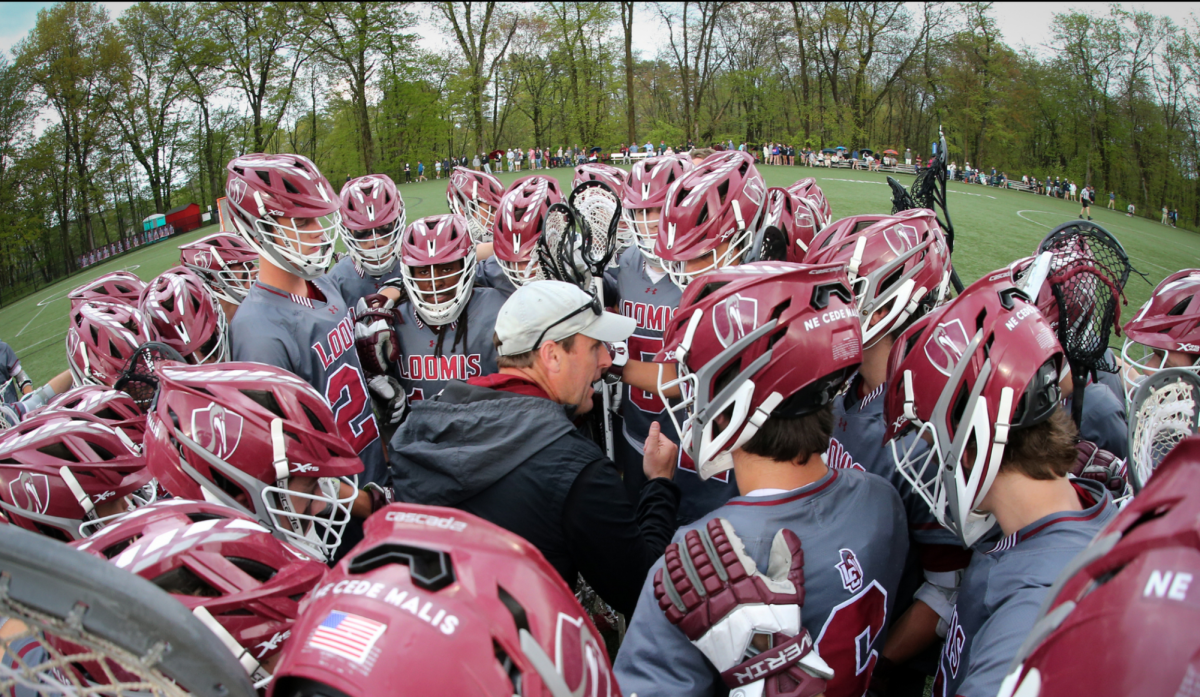Loomis Chaffee’s Inconsistent Environmental Initiatives
October 14, 2022
For the past few years, Loomis Chaffee has been putting its best efforts to make the school environmentally friendly, and to promote sustainability across campus. So far, notable progress has been made: the school has recycling bins all over campus, a solar array helps power facilities, and a constant emphasis is put on reducing our carbon footprint. Despite these advancements, Loomis must also recognize that there are still overarching problems that inhibit its quest for true sustainability.
Both Nathan Follansbee, the Associate Head for External Relations and Jeffrey Dyreson, the Director of Environmental/Sustainability Initiatives and the Associate Director of the Alvord Center, agreed that our campus is mostly eco-friendly and that the school has done a lot in the spirit of environmental sustainability. Mr. Dyreson explained how our school revolves around four categories of sustainability: energy, water, waste, and food. He said that students and faculty are engaged and attentive to the school’s sustainability, which can be shown through the efforts of the Alvord Center and a faculty and student sustainability committee.
One of the most important environmental initiatives that both Mr. Follansbee and Mr. Dyreson mentioned was the solar panel field located on the southwest side of the campus, next to the field hockey turf. These solar panels power 20% of the Island and are expected to reduce the carbon footprint by 15%. The fact that such a large proportion of the campus’ power is produced through renewable energy shows that the school’s commitment to a more environmentally-friendly campus is paying off.
However, Mr. Dyreson also noted that there are many ways in which the school could improve its carbon footprint. “We’ve been educating the faculty about what the campus does and offers like blue earth composting, the electric vehicle charging station, lightbulb exchange, water filling stations, just to name a few.”
As we think about sustainability at Loomis, we should also consider what Mr. Dyreson called “the strategic masterplan”––a plan for the school’s future development and which lays out issues for the administration to consider: sustainability initiatives, alternative energy sources (like hydrogen fuel cells, which Mr. Dyreson mentioned), as well as other environment-related matters such as how the school can control flooding in the Meadows. Additionally, the plan entails more electric vehicle charging stations, adding to the one behind Katharine Brush Library, and creating a school campus fleet that runs on electricity.
Though the masterplan does include environmentally-focused initiatives, it also entails plans that include construction and facility development, which would involve producing massive carbon emissions, and ultimately counteracting against the school’s goal towards sustainability.
As most know, the renovated dorms, such as Richmond, Cutler, Kravis, Howe, and Batch have installed air conditioning systems. “As they work on the dormitories going around the Grubbings Quad, Warham and Taylor will be next,” Mr. Follansbee said. It is also important to recognize that most of the major buildings like Clark and Olcott in our school are already air-conditioned as well. However, it is inevitable that this convenient privilege leaves a larger carbon footprint. The air-conditioning system is electricity-generated and not eco-friendly, offsetting Loomis’ sustainability goals. Loomis should completely prioritize and follow through with these goals to attain tangible progress, and become a much more climate-friendly school.
According to Mr. Dyreson, the Island’s carbon footprint is significantly larger compared to a hypothetical “town of 1,000 people”. It is important for us to think about how this already-large carbon footprint that Loomis has attempted to reduce with such effort might be negatively impacted by the additional air conditioning, but also construction and development. Mr. Follansbee said that we need to“figure out some ways on how to counterbalance [the carbon footprint and the air conditioning system].”
Thus, the administration as well as the student body should not be discouraged from continuing to pursue environmental initiatives because of apprehensions of creating more pollution in the process. Rather, we must continue to propose such plans while acknowledging and addressing other school policies that may pose a roadblock to our road to a greener campus.
While these initiatives may be greatly beneficial towards Loomis’ environmental efforts, it is essential to also acknowledge said initiatives will likely take years of financial investment and time to materialize. In the meantime of executing large-scale plans, simpler initiatives could be a viable solution to still stay green.
For example, one peer school, Suffield Academy, had a successful week-long electricity-reducing contest for dorms. Our school, in fact, also had a similar, but a month-long, contest called the Green Cup Challenge in the month of February in the previous years. As Mr. Dyreson says, “[This contest seemed like a success as] it raised a lot of awareness.” Bringing back such an event can help us effectively reduce the pollution caused by air conditioning while possibly discouraging its excessive use in the future. Ultimately, Loomis undeniably possesses great potential to truly become an environmentally sustainable school; however, to achieve such a goal, we must also make sure to address harmful, pollution-generating actions and hold the school accountable so that they can put their plans into action.








